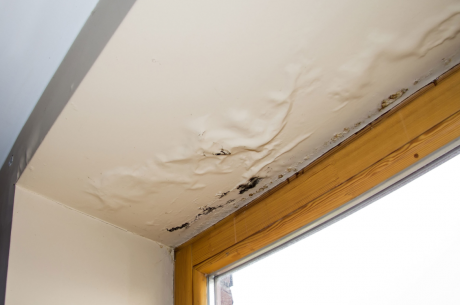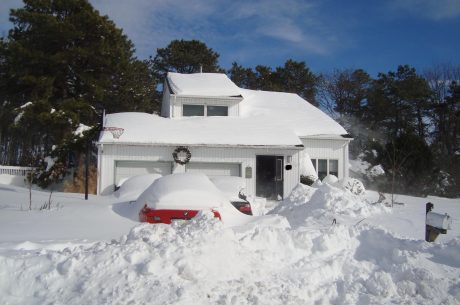Ways to Drain Water from Washing Machine
A washing machine is one of the hardest working appliances in any home, but when it stops draining properly, it can quickly turn into a headache. Whether it’s due to a clog, a malfunctioning pump, or another issue, standing water in your washer is not something you want to ignore. Left unattended, this can lead to mold growth, water damage, and unpleasant odors.
As restoration experts, we understand the importance of acting fast to avoid more significant problems. Which is why we have previously written about how to fix a leaking washing machine and how to remove mold from washing machine. But in this guide, we’ll walk you through the steps to safely and efficiently drain water from your washing machine before any further damage occurs.
Reasons why this happen to your washing machine
If your washing machine isn’t draining, several potential issues could be to blame. Here are the most common reasons:
Clogged Drain Hose: The hose that carries water from the machine to your home’s plumbing can get blocked by lint, debris, or even small clothing items, preventing water from exiting properly.
Blocked or Dirty Pump Filter: Many washing machines have a pump filter that can become clogged with lint, coins, or other small objects over time. When the filter is blocked, water cannot flow through, leading to drainage issues.
Faulty Drain Pump: The drain pump is responsible for pushing water out of the machine. If it’s damaged or malfunctioning, the machine will struggle to drain properly. Common causes include blockages, wear and tear, or mechanical failure.
Kinked or Damaged Hose: Sometimes, the drain hose may be kinked, pinched, or damaged, restricting water flow. Checking the hose for bends or tears can help you identify this issue.
Malfunctioning Lid Switch or Door Lock: Most washing machines have safety mechanisms that prevent them from spinning or draining if the door isn’t properly closed. If the lid switch or door lock is faulty, the machine may not enter the drain cycle.
Overloaded Washer: Overloading the machine with too many clothes can cause drainage problems, as water may not circulate properly. Excess weight can also strain the motor and drainage system.
Steps to Drain Water from Your Washing Machine
Draining water from your washing machine may seem daunting, but with the right steps, you can do it safely and efficiently. Here’s how to get it done:
1. Turn Off the Power
Safety first! Unplug the washing machine from the electrical outlet to prevent any accidents. If your washer is hard-wired, flip the breaker off to cut power to the appliance. Water and electricity don’t mix, so ensure the machine is completely disconnected before proceeding.
2. Locate the Drain Hose and Water Supply Hoses
The drain hose is typically located at the back of the washer. If your machine is top-loading, you’ll also find hot and cold water supply hoses. Turn off the water supply by closing the valves connected to these hoses. This will prevent additional water from flowing into the machine while you’re working.
3. Prepare a Drain Pan or Bucket
Place a shallow pan or bucket under the drain hose to catch the water. You may also want to have some towels or rags handy to wipe up any spills.
4. Detach the Drain Hose
Carefully disconnect the drain hose from the wall or plumbing connection. Be ready for water to start flowing out. If the water flow is too strong, control it by pinching or kinking the hose and releasing small amounts into the pan.
5. Check for Clogs
Once the water is drained, check the hose for any blockages that could be causing the drainage issue. Remove any debris or clogs and flush the hose with water to ensure it’s clear.
6. Use the Drain Pump Filter
Most front-loading washers have a drain pump filter located at the bottom front of the machine. This filter catches debris and can often be the source of the drainage problem. Open the filter panel, place a bucket under it, and slowly unscrew the filter cap to let the water drain out. Once drained, remove any debris from the filter and clean it thoroughly.
7. Manually Drain the Washer (If Necessary)
If you can’t access the hose or filter, manually draining may be required. For front-load washers, tilt the machine slightly and let the water spill out into a bucket or towels. For top-load washers, you can use a hand pump or siphon to remove the water.
8. Reassemble and Test
Once you’ve drained the water and cleared any blockages, reconnect the drain hose and turn the water supply back on. Plug the machine back in and run a short cycle to ensure it drains properly.
By following these steps, you can quickly address the problem and prevent further damage to your washing machine or home. If the issue persists, it might be time to call in a professional for a more thorough inspection.
Conclusion
Draining water from your washing machine doesn’t have to be a complicated task, but it’s crucial to act quickly to avoid potential water damage, mold growth, or more extensive repairs. By following the steps outlined in this guide, you can safely remove standing water and troubleshoot common drainage problems.
However, if the issue persists or you’re unsure about any step, don’t hesitate to contact a professional. Keeping your washing machine in top shape not only extends its lifespan but also ensures your home remains free from preventable water damage. Remember, regular maintenance is key to avoiding these kinds of problems in the future!




 PuroClean Emergency Fire, Water and Mold Damage Restoration New Jersey
PuroClean Emergency Fire, Water and Mold Damage Restoration New Jersey